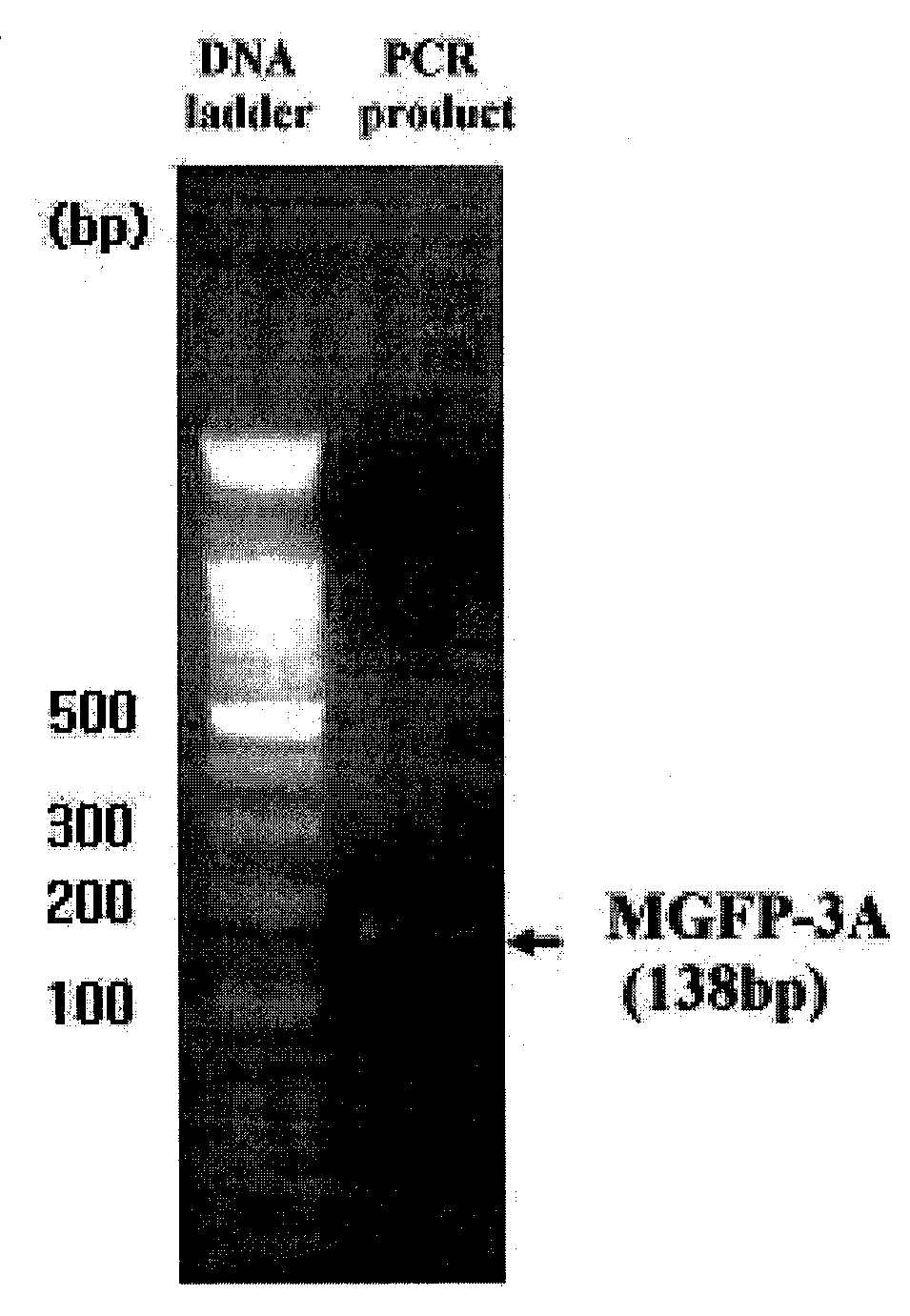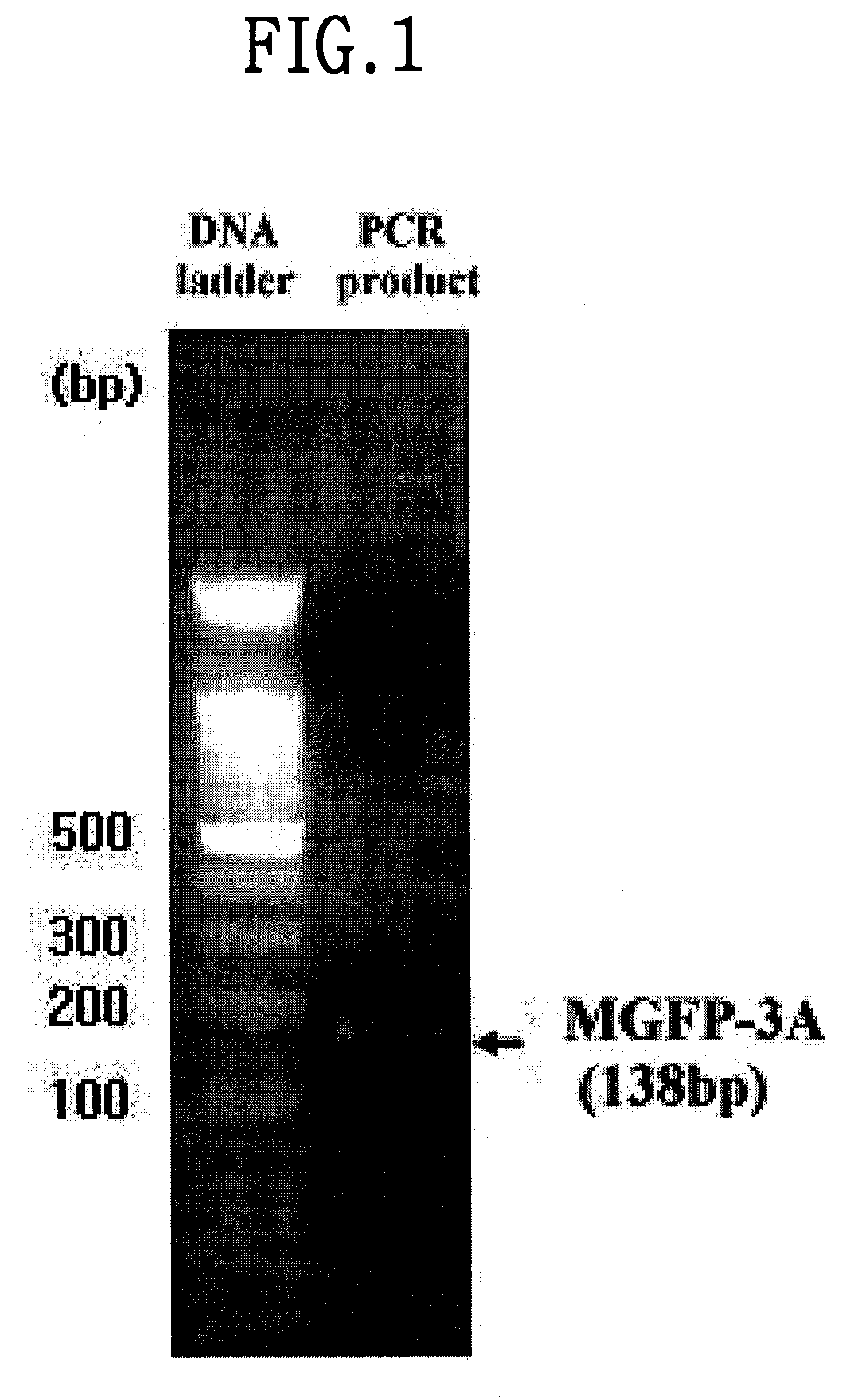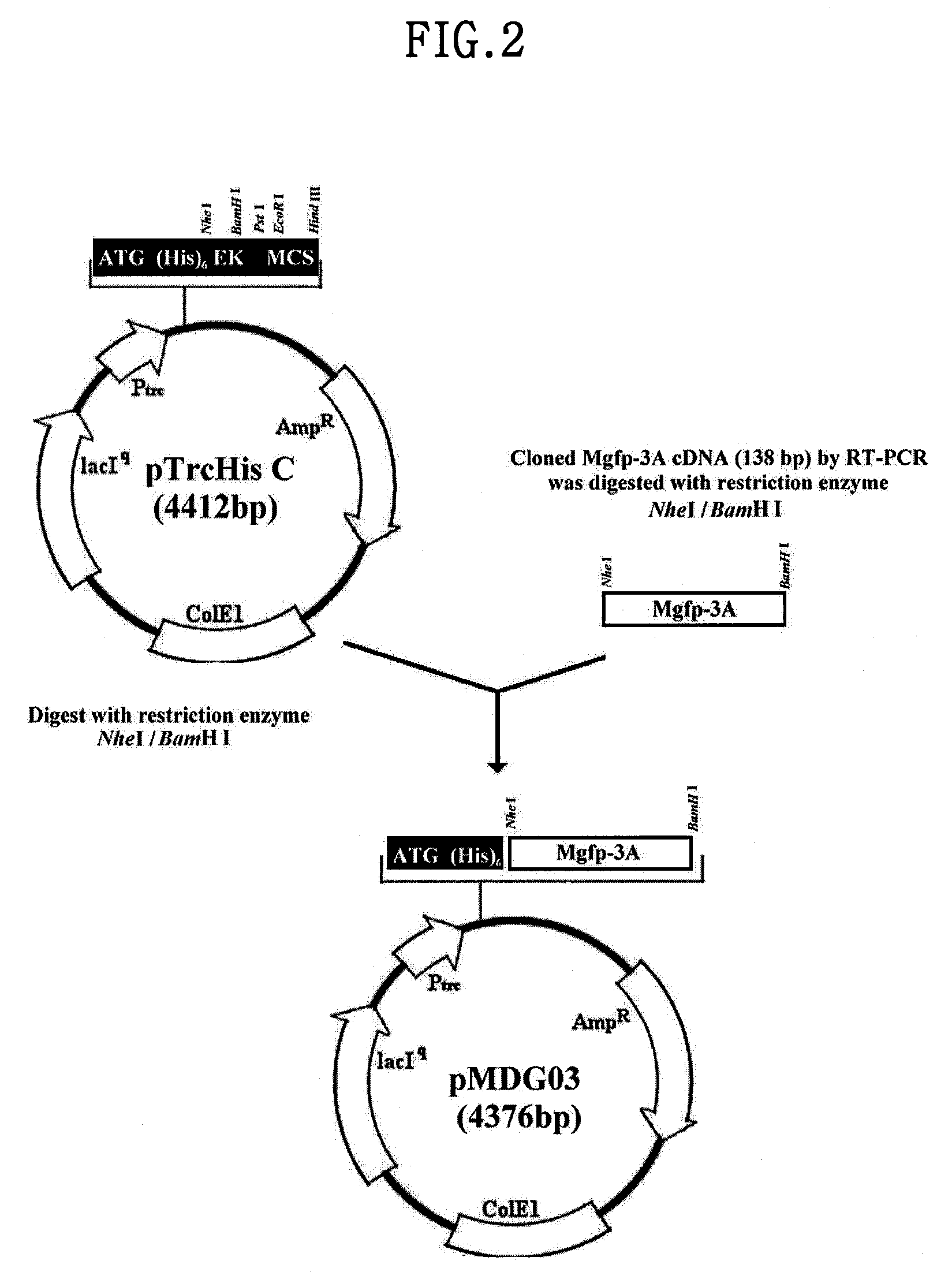Mussel bioadhesive
a bioadhesive and mussel technology, applied in the direction of peptides, peptide/protein ingredients, peptide sources, etc., can solve the problems of low protein yield, labor-intensive and inefficient natural extraction process, and failure to express functional and economical mussel adhesive proteins
- Summary
- Abstract
- Description
- Claims
- Application Information
AI Technical Summary
Benefits of technology
Problems solved by technology
Method used
Image
Examples
example 1
Cloning of MGFP-3A MUTANT Gene
[0090]To perform PCR of MGFP-3A nucleotide sequence previously reported in Inoue, K. et al., 1999, Eur. J. Biochem. 239 1, 172-176 1996 for a gene encoding MGFP-3A MUTANT, MGFP-3A MUTANT-U, a primer shown in SEQ ID NO: 1 (5′-GGG GCT AGC GCT GAT TAT TAT GGT CCA AAG-3′), and MGFP-3A MUTANT-D, and a primer shown in SEQ ID NO:2 (5′-CCC GGA TCC TTA ATA ATA CTT TCG TCC-3′) were constructed, and then used for reverse transcription reaction. A 138-bp PCR band of MGFP-3A MUTANT was obtained from cDNA library resulted from the reverse transcription as a template (FIG. 1), and inserted into pGEM-T (Promega, USA) of TA cloning vector for nucleotide sequence analysis.
[0091]As a result of the nucleotide sequence analysis, a coding sequence of adhesive protein with the exception of the secretion signal sequence of MGFP-3A MUTANT was obtained (SEQ ID NO:13). The amino acid sequence encoded by the nucleotide sequence is shown in SEQ ID NO: 14.
example 2
Construction of Vector for Producing MGFP-3A MUTANT
[0092]The MGFP-3A MUTANT cDNA in pGEM-T vector was cut with restriction enzymes Nhe I and BamH I, and then inserted into pTrcHis-C vector (Invitrogen, USA) treated with Nhe I and BamH I. The obtained vector was named pMDG03 (4376 bp) (FIG. 2).
[0093]The pMDG03 vector contains an IPTG(isopropylthio-β-D-galactoside-inducible trc promoter which is widely used for E. coli expression system for inducing the expression with IPTG(Sigma, USA) and His6 tag sequence for separation and purification by affinity chromatography.
example 3
Construction of a Vector Containing a Recombinant of FP-1, MGFP-3A MUTANT and MGFP-5
[0094]A vector for producing a recombinant mussel adhesive protein of MGFP-353 was named pENG353. A gene of MGFP-3A MUTANT contained in pMDG03 vector was amplified with a pair of primers ENG353F1 and ENG353R1, cut with Nde I and EcoR I, and inserted into pET-22b(+) (Novagen, USA), and treated with the same restriction enzymes to produce the pENG353—3 (5535 bp) vector. Then, a gene of MGFP-5 contained in pMDG05 vector was amplified with a pair of primers ENG353F2 and ENG353R2 which excluded the stop codon of MGFP-5 gene, cut with EcoR I and Hind III, and then inserted into pENG353—3 vector treated with Pst I and EcoR I to produce pENG353—35 (5747 bp). A gene of MGFP-3A MUTANT in pMDG03 was amplified with a pair of primer ENG353F3 and ENG353R3, cut with Hind III and Xho I, and then inserted into pENG353—35 vector treated with the same restriction enzymes to produce pENG353 vector (5870 bp) (FIG. 4).
[00...
PUM
| Property | Measurement | Unit |
|---|---|---|
| Fraction | aaaaa | aaaaa |
| Fraction | aaaaa | aaaaa |
| Force | aaaaa | aaaaa |
Abstract
Description
Claims
Application Information
 Login to View More
Login to View More - R&D
- Intellectual Property
- Life Sciences
- Materials
- Tech Scout
- Unparalleled Data Quality
- Higher Quality Content
- 60% Fewer Hallucinations
Browse by: Latest US Patents, China's latest patents, Technical Efficacy Thesaurus, Application Domain, Technology Topic, Popular Technical Reports.
© 2025 PatSnap. All rights reserved.Legal|Privacy policy|Modern Slavery Act Transparency Statement|Sitemap|About US| Contact US: help@patsnap.com



